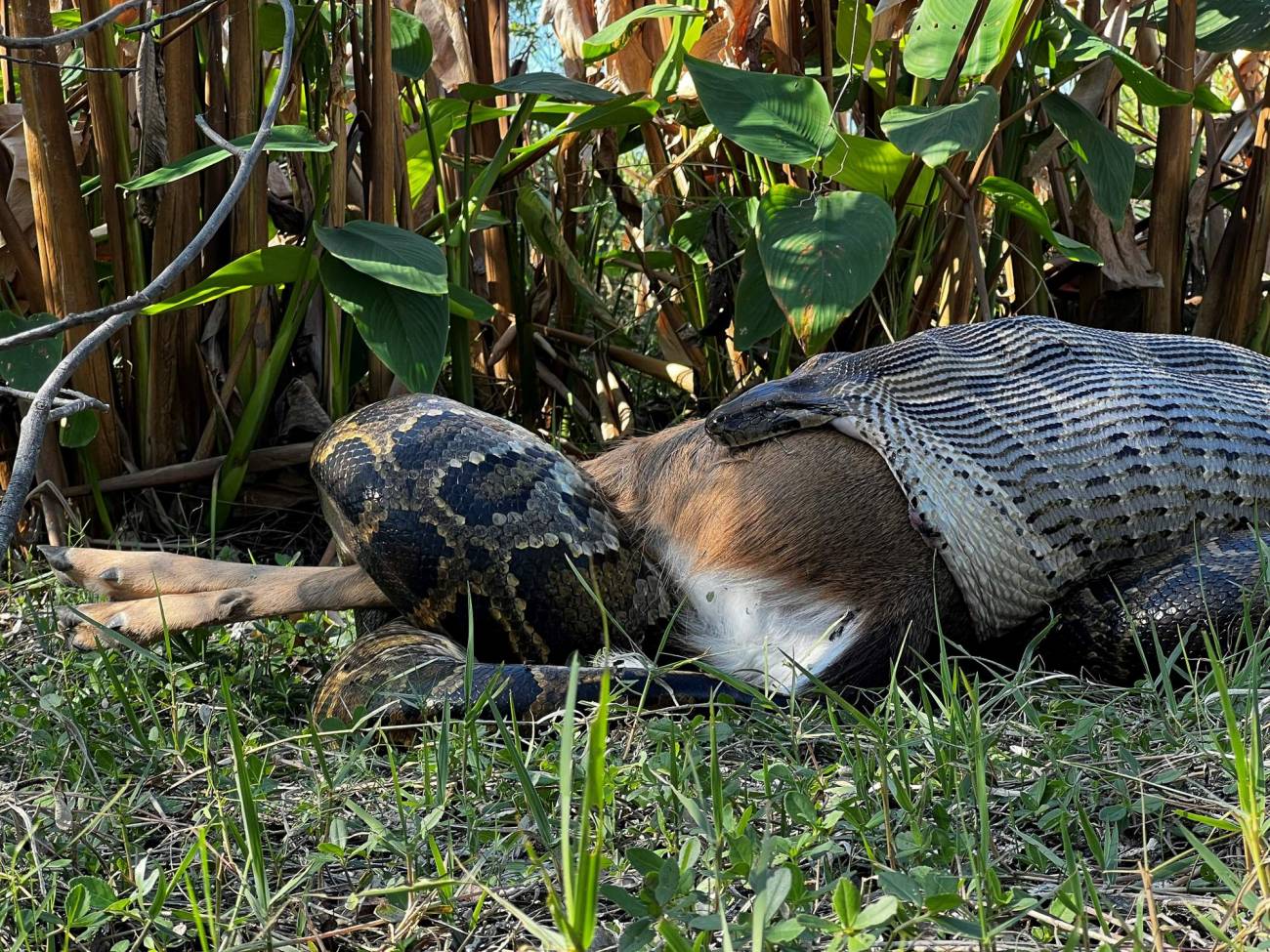Burmese pythons can swallow deer and alligators whole and have a previously undescribed ability to open their jaws.. Burmese pythons grow up to six meters in length and reach a weight of over 90 kg, these snakes have a negative impact on ecosystems.
Las snakes They eat their prey whole, without having to chew it first. The ability to open their mouth more or less determines the size of the pieces they can consume. Unlike the mandibles of humans and other mammals, the mandible bones are reptiles They are not merged.
Instead, they are held together flexibly by an elastic ligament, which allows them to open their mouths much wider. In fact the Burmese python (Python bivittata), which can grow up to six meters long and weigh more than 90 kg, takes this ability to the extreme.
A study published in the journal Reptiles & Amphibians shows that this type of python can do that consume much larger prey than scientists had estimated. So they can swallow whole prey, such as deer and alligators, and have a greater jaw-opening capacity than previously thought.
The team of biologists led by Bruce Jayne from the University of Cincinnati (USA) has discovered that the largest pythons captured in the Everglades National Park they have a opening capacity up to 26 centimeters —the equivalent of a circumference of 81 cm—, 40% larger in area than previously estimated.
Ecological impact of Burmese pythons
This ability allows pythons to consume significantly larger prey. A notable example illustrating this information was captured in Florida by technicians from the Southwest Conservationis a python that consumed a 35 kg deerwhich represents up to two-thirds of the snake’s total mass.
The study highlights concerns about its ecological impact invasive snakesintroduced into Florida through the pet trade, creating a clear risk in this area have decimated populations of foxes, lynx, raccoons and other animals.
Since 2013, these experts have been researching Burmese pythons and have removed 770 snakes weighing more than 15,000 kg. For specialists, this effort is critical to understanding and controlling the invasive population and mitigating its impact on the world’s ecosystem Everglades.

